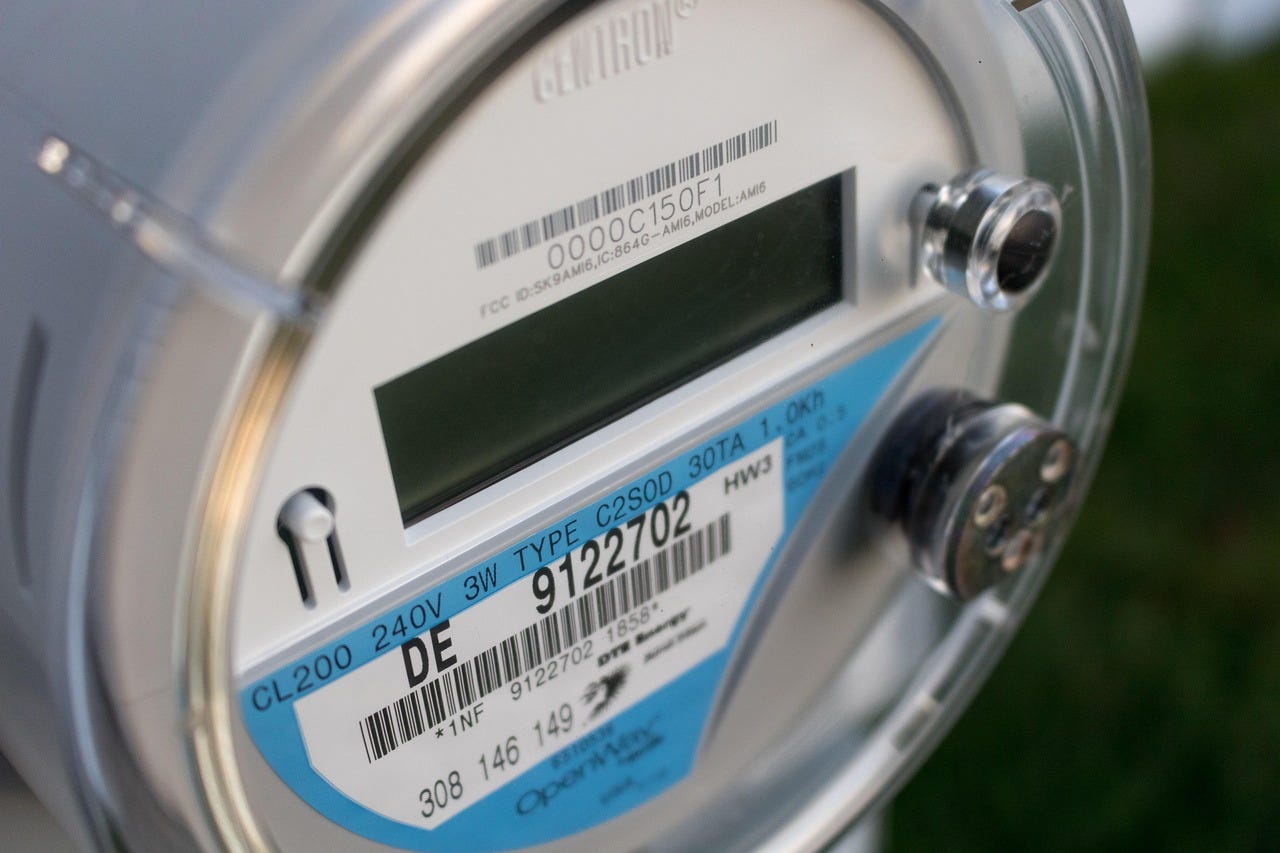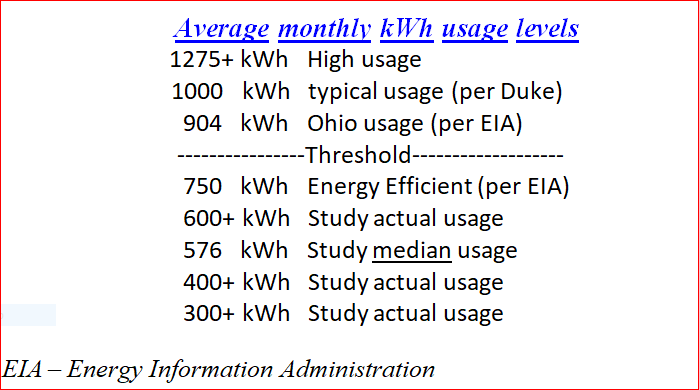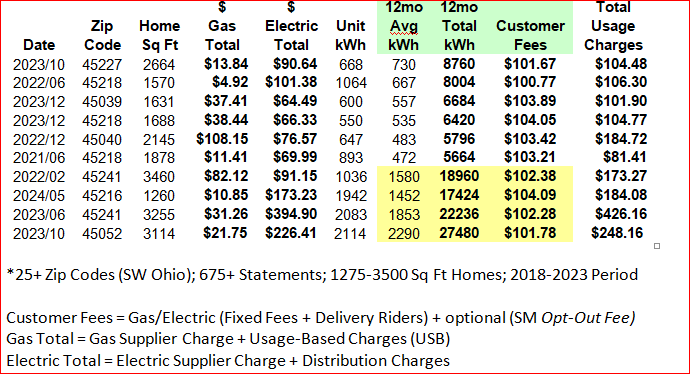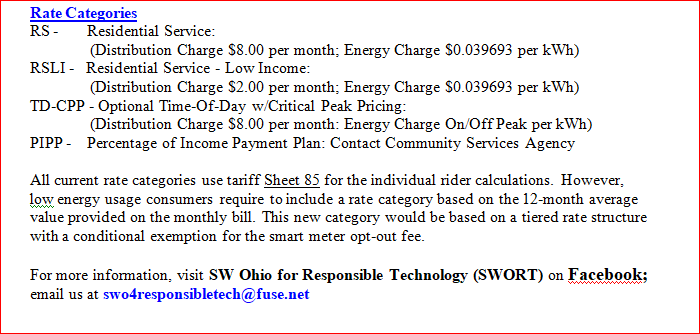Vince Welage: Duke Energy Billing Panel Study
Ohio data and ideas for a smarter grid, (and Germany agrees)
Image by Renee Gaudet from Pixabay
This is the text of 2 flyers that volunteer citizen researchers in Ohio have created for concerned ratepayers. The data demonstrates that customers with lower electricity consumption are subsidizing customers with higher consumption levels.
Vince reviewed hundreds of customer bills for several years.
Ongoing complaints from many local area Duke Energy customers about persistent overcharges on monthly utility bills prompted a study started in 2021 by a SW Ohio for Responsible Technology (SWORT) board member.
The primary goal of the study was to identify the cost drivers for the hidden charges (gas and electric delivery riders) on the Duke Energy monthly bill. These values are actually group charges comprised of individual billing tariffs defined as rate codes. For the most part, gas delivery rider charges are fixed amounts. A secondary goal was to determine the kWh usage median value by using the 12-month kWh average provided in the snapshot section of the monthly bill. The 12-month kWh average value can determine how practical it is for many homeowners to lower monthly energy consumption.
On each monthly utility statement, the customer is provided the 12-month kWh usage based on most recent history as well as the average monthly usage. The 12-month average provided is a key indicator for actual energy efficiency in home. In order to maintain a prescribed electric energy efficiency standard, the consumer must maintain very conservative home cooling temperatures during non-heat months of year (May-Sept) as well as very low levels of kWh usage during the 2PM-8PM time period that tracks Billed On Peak kWh hours Monday-Friday weekdays.
Most legislative proposals usually equate income (federal poverty guidelines) with energy efficiency rather than any kWh usage standard. The energy usage/low-income connection that is part of the service rule that allows a distribution rate reduction for a rate category such as a RSLI category is an important concession by the utility companies that low energy usage means less distribution resources are needed for that group of consumers. The same energy usage connection persists using the 12-month average standard.
The disparity in the approved rate categories requires some much-needed legislative oversight of PUCO rate approvals which are causing the current unbalanced amounts as overcharges on many consumer accounts. Also, despite efforts by many utility customers to reduce usage consumption through energy-efficient investments, the monthly bills continue to increase due to the inclusion of the customer fees (fixed + riders) that have reached unaccounted for levels at over 60% billed versus actual usage costs as part of the monthly statement.
Data Analysis of Customer Fees versus 12-Month kWh Usage Averages
Sample chart with customer fees at nearly identical charges in a comparison of low monthly average (400-750) kWh customers with high monthly average (1275+) kWh customers who are generating 3-4 times more usage in total yearly kWh consumption. The disparity between 12-month total usage levels has created a selective class of low energy usage ratepayers using the standalone Residential Service (RS) rate category.
Self Monitoring Analysis Reporting Technology
How Smart Meters Play a Major Role in Residential Area Installations
(AMI) Smart Meters are 2-way wireless transmitting which allow remote management of in-field devices (e.g. smart thermostats, etc). Analog meters don’t transmit data; they can only be read manually; they use less energy. Analog meters are designed to protect the electrical system from surges from the grid. The patent for analog meters is for surge arresters. Smart Meters have been installed by Ohio utilities including Duke Energy.
Smart Meter Components
Surveillance
· Smart Meters collect usage in real time; Utility can rent, sell, market to 3rd parties.
· Remote access allows utility to turn off energy with email or phone call notice.
· Time-of-Use Rate service allows higher charges using Critical Peak Pricing (CPP).
Overcharges
The outgrowth from the Duke Energy changeover from Analog Meters to AMI Smart meters has resulted in a high volume of disconnects, collections, and legal actions against consumers. There have been rate increases and/or riders approved with new technology in 2014 and 2017.
· 2009 - Start of Analog Meter replacements.
· 2014 - Finished install of 700,000+ AMI Smart Meters.
· 2016 - w/PUCO approval-Duke imposes $100 setup+$30/month SM opt-out fee.
· 2018 - Replaced existing AMI Smart meters; approx 1 million now deployed.
· Dec 2022 - Duke and PUCO agreed to $22.6 million customer rate increase as well as amending and continuing several existing delivery riders (tariffs).
Health and Safety Issues
· Smart Meters emit Radio Frequency Radiation (RFR).
· RF radiation is biologically-active electromagnetic exposure absorbed into skin.
· Chronic exposure to RF (wireless) radiation has been linked to neurological damage, reproductive effects, cancer, and numerous other health issues.
· In 2017, a letter signed by 3 doctors was submitted to PUCO asking there be no fees approved for Ohioans wanting to “opt out” of electric, gas, and water smart meters.
· Smart Meters present the risk of excessive discharges; Prone to fires and explosions.
· AMI meters must be properly grounded in order to divert lightning strikes.
Privacy and Security Issues
· Cyber security risk from hackers using backdoor or calling home mechanisms during software updates; AMI meters need frequent updates since they are minicomputers.
· Duke Energy distributed network has experienced significant number of cyber attacks using Smart Meter technology resulting in fines because of cyber security violations.
· Home energy usage tracking data must be kept private and confidential.
For more info, visit SW Ohio for Responsible Technology (SWORT) on Facebook; email us at swo4responsibletech@fuse.net or swort_group@fuse.net







